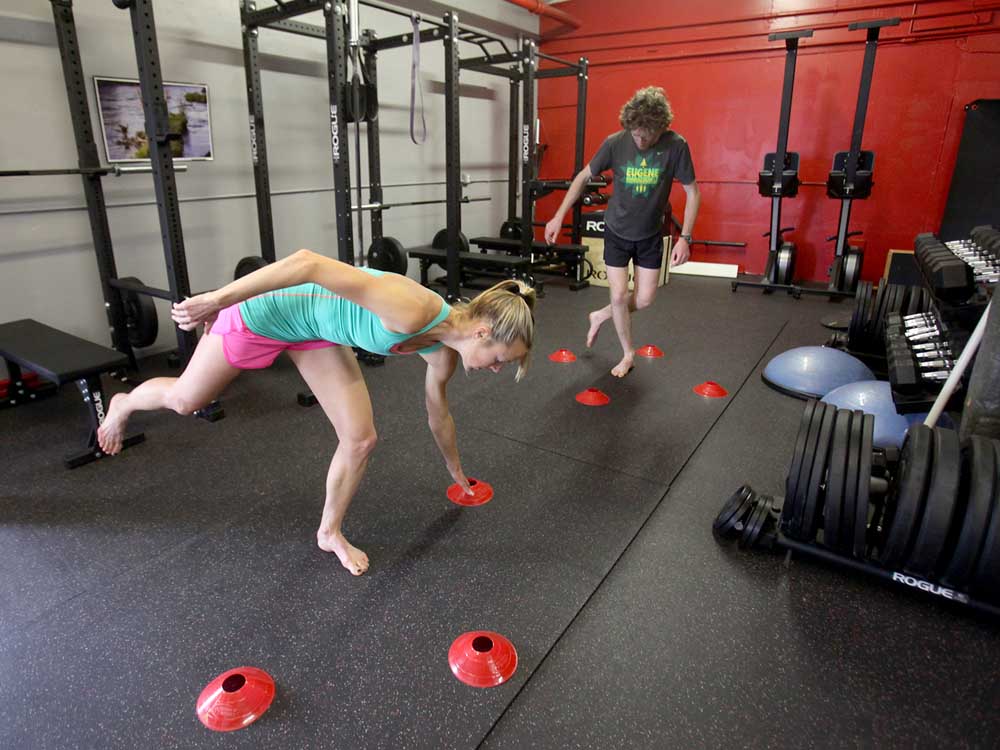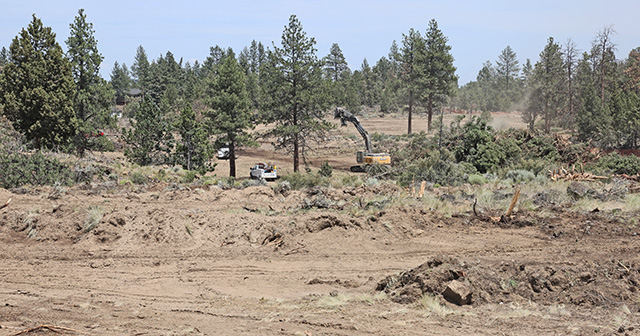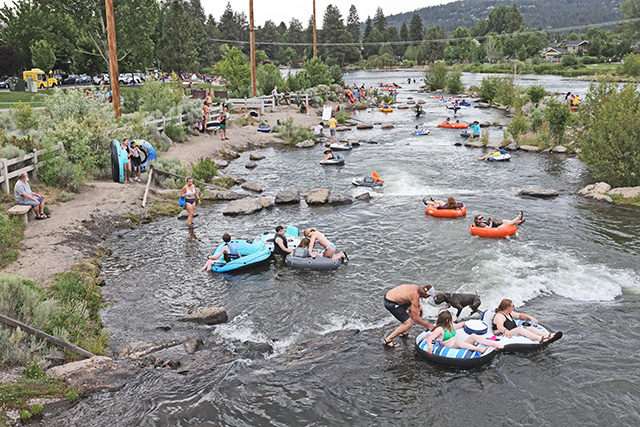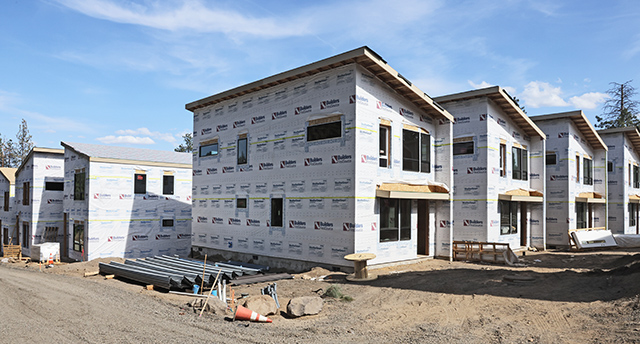Shin splints? Knee pain? It could be weak feet
Published 12:00 am Thursday, May 21, 2015

- Tess Freeman / The Bulletin Stephanie Howe, left, and David McKay practice two variations of a single leg balance cone touch during a strengthening session at Focus Physical Therapy at Recharge las week. The single leg balance is an exercise that can help strengthen your feet to prevent other physical ailments.
When cars act funny, mechanics typically don’t blame their owners for driving too much. They look for some internal issue that’s out of whack — say, the alignment or the timing belt.
The same is true for people, says Barrett Ford, the owner of Step & Spine Physical Therapy, which has locations in Sisters, Redmond and, soon, Bend.
“A lot of times we think it’s an overuse issue, but there is usually a mechanical issue of why that’s happening,” he said.
One of the first culprits physical therapists investigate when clients come in with a range of ailments — low back or knee pain, shin splints, to name a few — is their foundation: the feet.
Weak feet or ankles that lack stability can cause a number of issues up north, although people tend to overlook these areas. But because feet form the base for the body’s forward motion, they’re crucial in determining which muscles will be emphasized as the body moves. If they’re weak, a person’s balance can be completely off — a big problem for older individuals.
Weak feet and instability can also contribute to ailments such as bunions; Morton’s neuroma, a painful nerve condition in the ball of the foot; Achilles tendonitis, swelling and pain in the tendon that connects the leg to the heel; hip bursitis, inflammation of the fluid-filled sacs in the hip joint; and plantar fasciitis, swelling and pain in the tendon that runs along the bottom of the foot.
“You know the adage, ‘When the foot hits the ground, everything changes?’ It’s so literally true,” Ford said. “It’s oftentimes the key to treating the knee, treating the hip, treating the back, because if you can change things below, where everything starts, you can really change what’s going on above.”
Is it your shoes?
The kind of shoes a person wears can make the problem worse. Different foot issues call for different kinds of shoes.
People with flat feet should wear motion-control shoes, which provide arch support, Ford said. But if people who don’t have flat feet use motion-control shoes, it can cause their foot to strike the ground in a way that can cause injuries, he said. Some running shoes have slight heels, but putting weight on that area would cause even more problems for people with forefoot issues, Ford said.
Physical therapists tend to lose the most sleep over shoes that don’t offer any arch support, such as flip flops, slip-ons or older shoes that are wearing down, said Tom Pietrowski, a physical therapist who owns Compass Physical Therapy in Bend. Most running and walking shoes are built with at least a small amount of arch support, he said.
High-heeled shoes, men’s dress shoes and cowboy boots are also suspect because they tend to narrow at the front and push the toes together, Ford said. Toes are important for strength and balance, and compressing them hampers both.
“If you put them in good, supportive shoes and work on foot strength and other exercises, knee pain just kind of goes away,” said Burke Selbst, who founded Focus Physical Therapy in Bend with his wife in 2005.
Do you have weak feet?
A simple way to determine what kind of shoes you need is to wet your foot, step on concrete and notice what your footprint looks like, Ford said.
If you see only a heel and toes, it probably means your feet are tight and inflexible, he said. If you see one, unbroken print, it means you’ve got flat feet that may be too flexible, an issue in itself, he said.
If you’re not sure what all this means for you, you’re in luck. The tests local physical therapists say they use to gauge foot strength and ankle stability happen to be ones you could just as easily do in your living room.
The main test is simply standing on one leg with the other bent at a 90-degree angle. You’ll feel your feet wobbling and adjusting as they struggle to keep you upright. The younger you are, the longer you should be able to keep standing. People ages 18 to 39 can do this for an average of 43 seconds, Pietrowski said. For those ages 40 to 49, it’s 40 seconds. Ages 50 to 59: 37 seconds. Ages 60 to 69: 27 seconds.
Once that is mastered, you can make it more difficult by closing your eyes, which are crucial to balance. Once that is done, all age categories plummet to less than 10 seconds, Pietrowski said.
After that, try moving your arms and free leg, lowering down to pick up an object, perhaps, or forming a star shape by stretching your arms and legs in opposite directions. In addition, Ford suggests looking up, down and side to side while balancing on one leg. That will take away the inner ear’s control over the balance and will exercise the other sources of balance: vision and balance receptors in the skin and joints, he said.
(Side note: Much of yoga involves balancing on one leg while moving the body into a number of different postures. It’s great for improving foot strength and ankle stability, as are classes such as tai chi, zumba and pilates, Pietrowski said.)
Before doing the single-leg stand with your eyes closed, place your cellphone in front of you and take a video, said Jay Dicharry, director of the REP Lab in Bend, which helps athletes improve their performance. When you run, 80 to 85 percent of your stability comes from your big toe, so ideally, you’ll see that you’re using your big toe, he said.
Many people, by contrast, will learn that they roll to the outside of their feet and wobble there, Dicharry said.
“If that’s your control strategy, and then you start running — which places two and a half times your body weight onto that wobbly foot and ankle every single step — good luck with that,” he said.
Another good test is to try to pick up a towel or small objects like marbles using only your toes. If you can’t do that, it could illustrate foot weakness or inflexibility in the toes, Pietrowski said.
Dicharry, a physical therapist who works with everyone from novice to Olympic athletes, also recommends what he calls “toe yoga” to test your control over the muscles in your feet. Standing normally, you should be able to lift your big toe without moving the rest of your toes. You should also be able to lift your other four toes while keeping your big toe planted.
“We’re talking about being able to do a better job controlling the muscles inside your feet, and that derives a better foundation for everything up the chain,” he said.
Getting stronger
When it comes to developing foot strength and stability, the test — standing on one leg — doubles as the exercise.
“Go for a minute. Go for 30 seconds. Do whatever you can,” Ford said.
For another exercise, try slowly and repeatedly touching the ground in front and to each side of you, which will strengthen your feet, calves, upper leg, butt and hips, Ford said.
Dicharry said he knows a lot of people will want to skip the exercises and just start running, but he encourages taking time for foot strength and stability. Often when he talks to running classes, he has them stand on one leg as they listen.
“If you work on this stuff for a week, people can do things that blow their minds,” he said. “Foot coordination happens pretty quickly, and people will be surprised by the gains they can make.”
People who are more sedentary or concerned about balance should try backing into a corner before standing on one leg, Selbst said. That way, they can use both walls for stability.
Unfortunately, Pietrowski said most of the feet he sees in his practice are already thoroughly beat up; some fresh out of surgery. He urges people to pay attention to their feet and wear quality shoes.
“It’s not good when your feet go bad,” he said. “You really want to take care of them.”
— Reporter: 541-383-0304,
tbannow@bendbulletin.com







